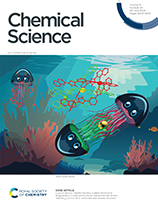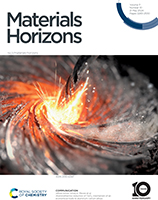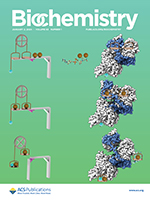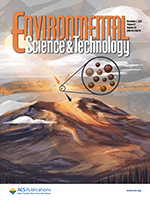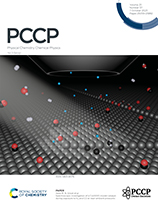Intermolecular interactions drive the formation of biological supramolecular architectures, inspiring the design of artificial supramolecular assemblies and molecular machines. Here, the engineering of supramolecular interactions allows selection of a self-recognition process of dimerization over one of helicate-cage formation. Read more »
Journal Covers
Engineering Lipophilic Aggregation of Adapalene and Adamantane-Based Cocrystals via van der Waals Forces and Hydrogen Bonding
Adamantanes are emerging building blocks for active pharmaceutical ingredients. In this work, we sought to understand how systematic modification of the hydrophobic cage in adamantanes could result in changes to crystal packing in single and multicomponent organic solids. Read more »
Two-dimensional perovskite templates for durable, efficient formamidinium perovskite solar cells
When the lattice-matched 2D perovskite BA2FAPb2I7 (red) is incorporated into a yellow-phase FAPbI3 matrix (yellow), the 2D crystallites present a perovskite-like surface, which serves as a template for the FAPbI3 to convert to its photoactive phase (black). The resulting phase-stabilized FAPbI3 shows substantially improved optoelectronic properties and exceptional stability under 85°C and sunlight. Read more »
Direct Observation of Room-Temperature Magnetic Skyrmion Motion Driven by Ultra-Low Current Density in Van Der Waals Ferromagnets
Researchers demonstrate current-driven magnetic skyrmion motion in van der Waals ferromagnets at room temperature. The skyrmion motion presents ultra-low critical current density to activate their dynamics, thanks to minimized defects in the van der Waals gap. The findings will provide a new platform for spintronics application in the future. Read more »
Aluminothermic reduction of CeO2: Mechanism of an economical route to aluminum–cerium alloys
In this study, we demonstrate a novel approach to producing Al–Ce alloys by reducing CeO2 in liquid aluminum at 95% reduction efficiency. This work provides the basis of an economic route to producing high-strength Al–Ce alloys with enhanced dispersion strengthening from embedded Al2O3 particles. Read more »
Nitrogen-fixing organelle in a marine alga
A nitrogen-fixing organelle, or “nitroplast,” has been identified in a marine alga on the basis of intracellular imaging and proteomic evidence. This discovery sheds light on the evolutionary transition from endosymbiont to organelle. The image depicts the cell architecture and synchronized cell division of the alga Braarudosphaera bigelowii with nitroplast UCYN-A (large brown spheres). Read more »
Correlating Conformational Equilibria with Catalysis in the Electron Bifurcating EtfABCX of Thermotoga maritima
Anaerobic SEC-MALS-SAXS at the SIBYLS beamline probes the conformational states behind electron bifurcation in the Thermotoga maritima EtfABCX, revealing insights on mechanisms at the thermodynamic limits of life. Shown are the bifurcation- and electron-conducting-like states experimentally observed for the first time in solution. Read more »
Shaping the Water-Harvesting Behavior of Metal–Organic Frameworks Aided by Fine-Tuned GPT Models
The reticular design and synthesis of metal–organic frameworks enable the structures to be engineered at an atomic level, allowing their properties to be harmoniously harnessed. AI-assisted design of building units can reduce human labor in the enumeration and search for possible structures, thereby accelerating the discovery of MOFs. Read more »
Optical Properties of Individual Tar Balls in the Free Troposphere
Tar balls are found in biomass-burning smoke, and their sunlight-absorption properties are highly uncertain. This study investigates the optical properties of individual tar balls in the free troposphere to better understand their influence on climate. Read more »
Spectroscopic investigation of a Co(0001) model catalyst during exposure to H2 and CO at near-ambient pressures
We have performed near-ambient-pressure X-ray photoelectron spectroscopy on Co(0001) model catalysts during exposure to gases relevant to Fischer–Tropsch synthesis, i.e., CO and H2, at 0.25 mbar total pressure. At this pressure, CO seems to be more efficient at keeping the Co(0001) surface metallic than H2, which is the opposite behavior as reported in the literature for other pressure ranges. Read more »
- 1
- 2
- 3
- …
- 18
- Next Page »
